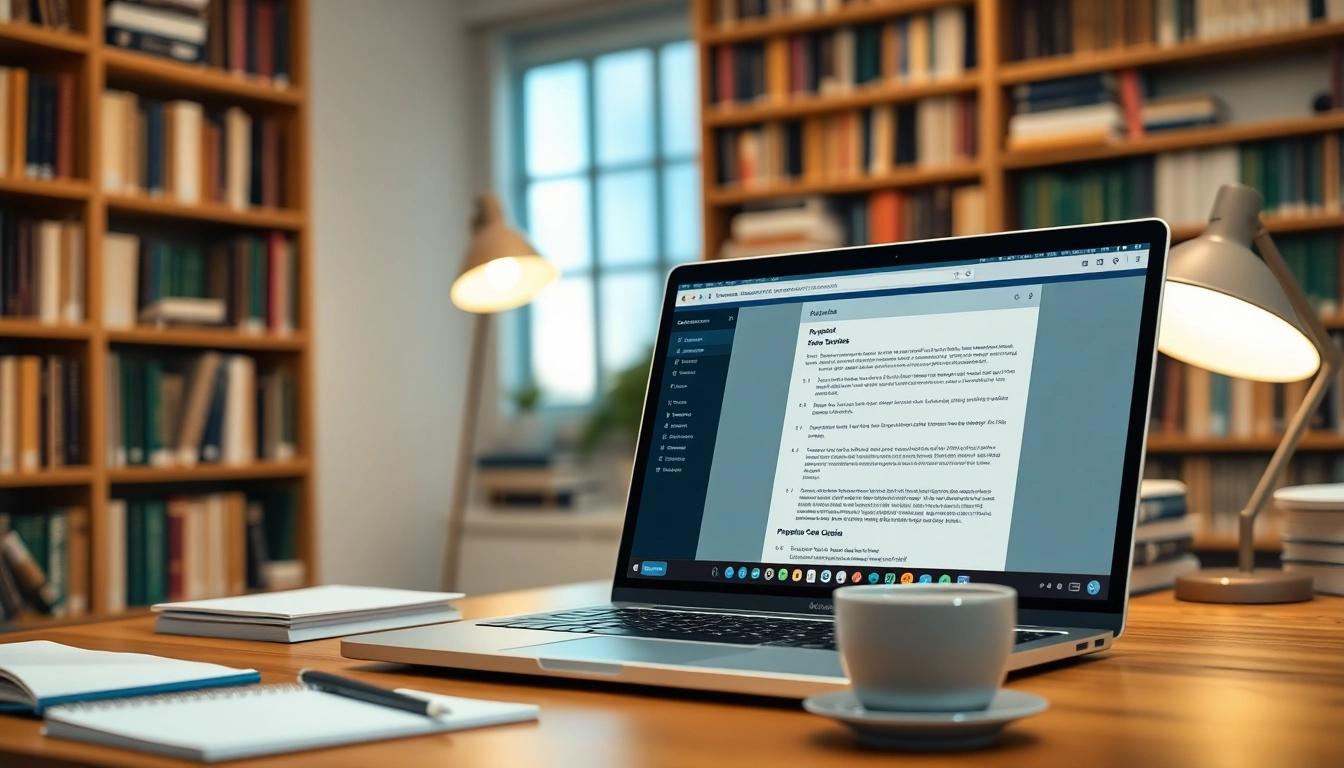Understanding Plagiarism and Its Consequences
Definition of Plagiarism
Plagiarism is the act of using someone else’s work, ideas, or intellectual property without giving proper credit. This can manifest in various forms, from directly copying text to paraphrasing without acknowledgment. In academic and professional settings, plagiarism is considered a serious ethical violation with significant implications.
Types of Plagiarism
There are several types of plagiarism, including:
- Direct Plagiarism: Copying someone else’s work word-for-word without citation.
- Self-Plagiarism: Submitting one’s own previously submitted work as new without acknowledgment.
- Patching: Organizing existing work into new content without credit.
- Paraphrasing: Rewording someone else’s ideas without proper citation.
- Accidental Plagiarism: Failing to cite sources properly, often due to negligence rather than intent.
Consequences of Plagiarism in Academics and Publishing
Plagiarism can lead to severe repercussions, especially in academic settings. Consequences may include loss of reputation, academic probation, suspension, or even expulsion. In publishing, plagiarized content can result in retraction of articles, legal action, and damage to professional credibility. Acknowledging and understanding the gravity of plagiarism highlights the importance of utilizing tools like a plagiarism checker to ensure content originality.
The Importance of Using a Plagiarism Checker
Maintaining Originality in Your Work
In a world where content is continuously created, maintaining originality is crucial. Utilizing a plagiarism checker helps authors ensure their work is unique and not unintentionally infringing on others’ intellectual property. This practice not only protects the writer but also enhances the authenticity of their content.
Boosting Credibility and Reputation
For academics and professionals alike, credibility is paramount. Work that adheres to ethical standards of originality reflects the author’s integrity. Using plagiarism checkers signifies a commitment to uphold these ethics, thus significantly boosting one’s reputation in academic and professional circles.
Enhancing Learning and Writing Skills
Engaging with a plagiarism checker not only safeguards against plagiarism but also serves as a learning tool. By analyzing feedback from these tools, writers can identify areas for improvement, enhance their writing skills, and develop a better understanding of citation practices.
How to Effectively Use a Plagiarism Checker
Choosing the Right Plagiarism Checker for Your Needs
Selecting an appropriate plagiarism checker involves considering factors such as accuracy, ease of use, and whether it meets specific requirements. For academics, tools that can compare against scholarly databases may be more relevant, whereas general writers may require a tool that can scan diverse web sources.
Best Practices for Using the Tool
To effectively utilize a plagiarism checker, one should:
- Understand the Tool: Familiarize yourself with how the tool works, including its strengths and limitations.
- Run Multiple Checks: Use multiple tools if necessary for thorough checking, as different programs may have varying databases.
- Review Reports Carefully: Critics can emerge from false positives, so it’s essential to analyze the checker’s reports critically.
Interpreting the Results Correctly
Interpretation of plagiarism checker results can be nuanced. A percentage of similarity does not always equate to plagiarism. Writers should differentiate between common phrases and genuine instances of content duplication. Understanding the context of flagged items is key to making informed decisions about revisions and citations.
Comparative Analysis of Leading Plagiarism Checker Tools
Features of Top Plagiarism Checkers
Various plagiarism checkers offer distinct features that cater to different user needs:
- Comprehensive Database: Some tools boast an extensive database comprising academic papers, articles, and web pages.
- AI-Powered Analysis: Advanced tools utilize AI and machine learning for nuanced detection of paraphrased content and extensive similarity checks.
- User-Friendly Interface: The best tools offer intuitive designs, making it easy for users to navigate reports and results.
Pricing Models and Accessibility
Pricing varies widely across options, from free versions with limited functionality to premium subscriptions that provide extensive capabilities. Accessibility to essential features should play a crucial role in deciding which tool works best for your needs. For budget-conscious users, free services such as Grammarly and Scribbr offer excellent initial functionalities.
User Feedback and Trustworthiness
When considering a plagiarism checker, user reviews and testimonials can provide valuable insights into a tool’s effectiveness. High ratings and positive feedback can indicate reliability and trustworthiness. Tools with established reputations in academia tend to be more reliable, advocating the importance of research before selecting a tool.
Future of Plagiarism Checking Technology
Advancements in AI and Machine Learning
As technology progresses, so too does the capability of plagiarism checkers. Emerging advancements in AI and machine learning continuously improve the accuracy of detection tools, allowing them to recognize even the most complex forms of plagiarism. This ongoing development ensures that authors have access to cutting-edge technology to protect their work.
Impact on Academic Integrity and Ethical Writing
With enhanced technology, the future of plagiarism checking holds the potential to reinforce academic integrity significantly. Institutions may increasingly rely on sophisticated plagiarism detection methods to uphold ethical writing standards, leading to stricter adherence to originality across all forms of scholarly work.
Predictions for the Next Decade
Looking ahead, plagiarism checkers will likely integrate more seamless AI solutions, providing real-time feedback and more interactive user experiences. These innovations will empower a new generation of writers to produce original content effectively while continually enhancing the educational landscape regarding writing ethics and integrity.
